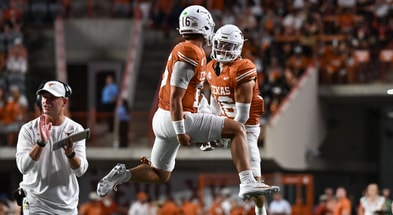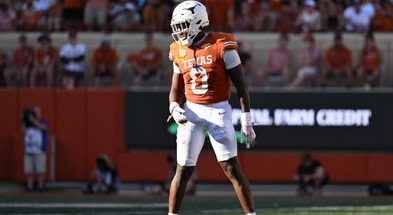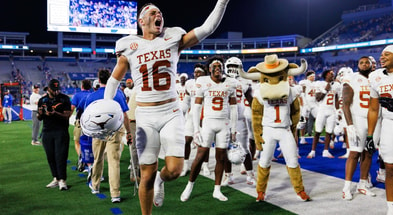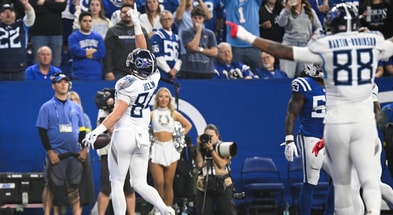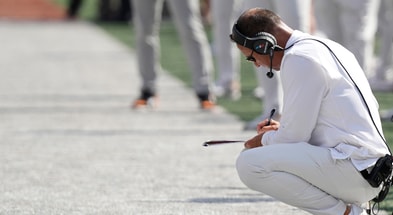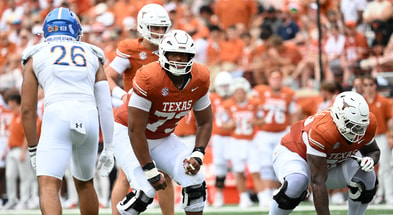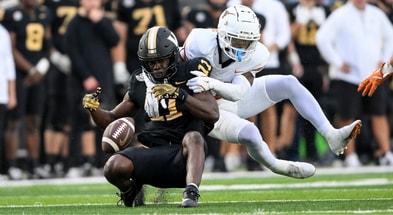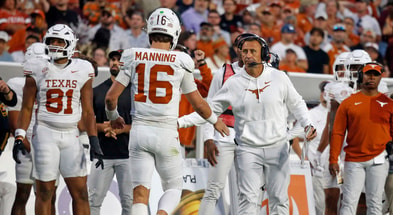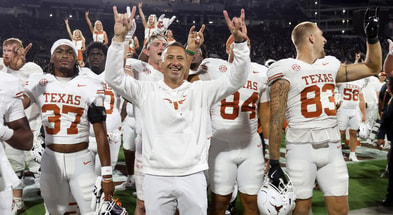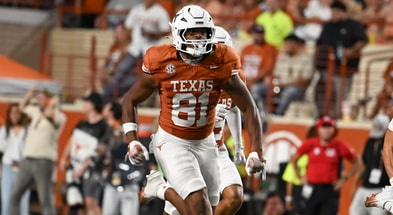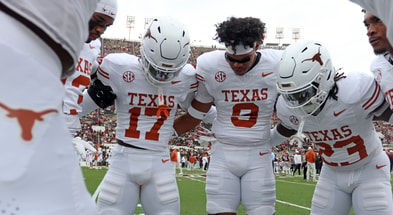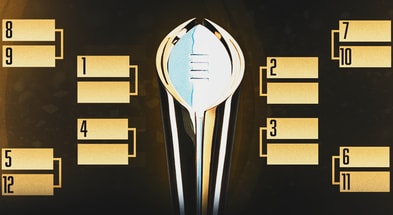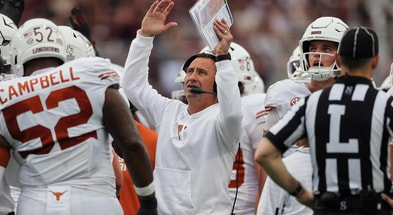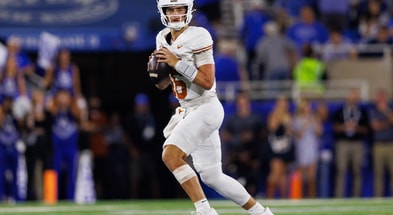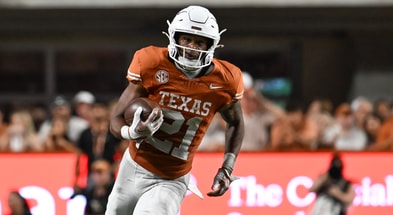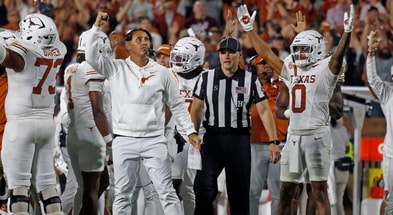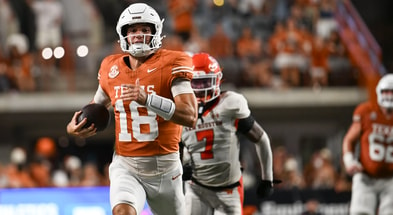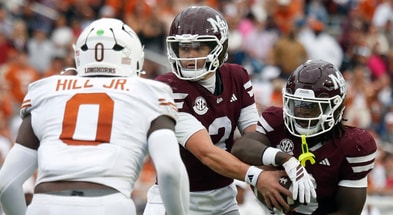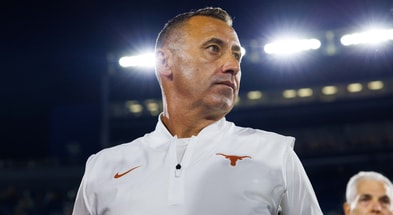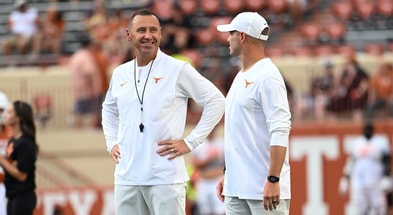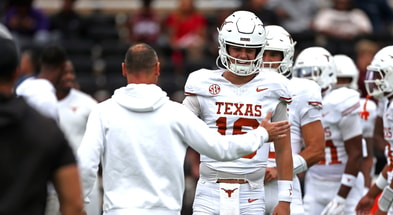Texas' defense will have to prepare for the most unique offensive line in the nation
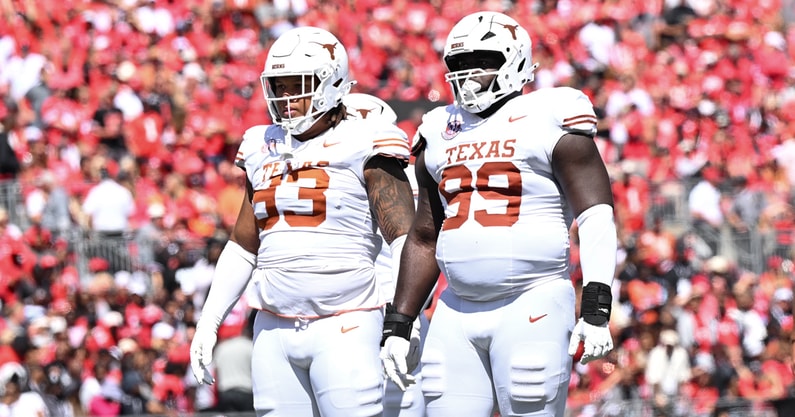
No one in college football uses their offensive line like Vanderbilt.
[Sign up for Inside Texas TODAY for $1 and get the BEST Longhorns coverage!]
At least it doesn’t feel like anyone still uses this style. The Commodores utilize a system popular in lower levels of high school football, something that many age out of once they pass junior high.
Vanderbilt flips their offensive line.
For those who aren’t as in tune with the inner workings of lower-level football with limited talent and size in the trenches, here’s how it works: Instead of your traditional side assignments (think left tackle, right guard), flipping offensive lines have a strong side and a quick side.
The strong-side offensive linemen usually line up on the side of the tight end (the strong side of the formation). These players are usually more skilled at setting the edge and being run behind, whether that be on traditional zone runs or on long pulls from the strong-side guard on counter runs.
The quick linemen are, well, quicker. They’re better at setting up trap run plays and getting to second-level linebackers, while also being better at handling stunts that might be coming from the strong side of the offensive line.
This strategy is often used by coaches in talent-ridden areas where finding even five effective offensive linemen is unlikely, let alone 10–15. Instead of hoping to find five OLs who do everything well, you try to find two players at each spot with varying skill sets that can be placed at different positions on the line. If only two kids in your area are big enough to stop-block a defensive tackle, they’re going to play the strong side, while the more mobile blockers stick to the quick side.
Not long ago, Vanderbilt was one of the worst rushing offenses in the nation. That was before head coach Clark Lea brought on flipping-the-line guru Chris Klenakis. Klenakis has been known to use this strategy, most notably helping Louisville dominate on offense with Lamar Jackson under center.
The goal with Klenakis and Lea’s plan, as is often the case with this Vanderbilt team, was to alleviate any weaknesses that might occur from a lack of recruiting and interior physicality in the SEC. Instead of asking a guard to learn everything about blocking and scheme, they would only have to learn singular concepts that carry over, whether they’re on the left or right side of the line.
The linemen’s roles become more familiar, run blocking stays consistent because of the lack of mental load, and the Commodores can attack what they believe is a weak point on the defensive line.
Top 10
- 1New
NCAA betting policy
D1 Board makes change to decision
- 2
UF Coaching Search
Contingency plans being vetted
- 3
National Title Odds
Big shakeup after Week 9
- 4
LSU Coaching Search
Names to know, timelines to watch
- 5Hot
BCS Formula
Predicts CFP Top 25
Get the Daily On3 Newsletter in your inbox every morning
By clicking "Subscribe to Newsletter", I agree to On3's Privacy Notice, Terms, and use of my personal information described therein.
“I actually have never played against a line like that,” Texas defensive lineman Hero Kanu said. “I remember I was watching one of the games on TV and said, ‘Dang, am I tripping? Wasn’t he just on the right side?”
This will be a new challenge for the Longhorns—one most, if not all, of Texas’ defensive linemen have never seen. Vanderbilt is going to emphasize running the ball in a game like this to try to control possession, so the Longhorns must remain sound in their play at the line of scrimmage.
There are definitely ways to counter this approach, however.
Kanu is an example of a defensive tackle who can succeed against both strong and quick guards. He may be too fast for 340-pound strong guard Chase Mitchell to get a strong hold of him or to keep up on stunting actions.
Someone like Colin Simmons can be matched up in two different ways. You could put him on the strong side and hope that he’s just too fast on the pass rush for a below-average agility tackle to defend him. You may be susceptible to being run on, though.
You can also play him on the quick side and potentially give him the harder matchup in the pass rush, but allow Texas to stack 270–330-pound bodies where Vandy wants to rush. If they counter back to him, Simmons has shown to be a much-improved run defender this season and may just be too fast for a puller or too strong for a quick tackle.
Texas’ front will need to bring its A-game, staying focused in the run game and utilizing simulated pressures and stunts to create favorable matchups in the pass game. Vanderbilt has found a lot of success this season using this strategy, but they haven’t played a front seven with the talent of Texas.
